Canyon Grizl CF SL 8 1by review
Big volume comfort for bikepacking adventures
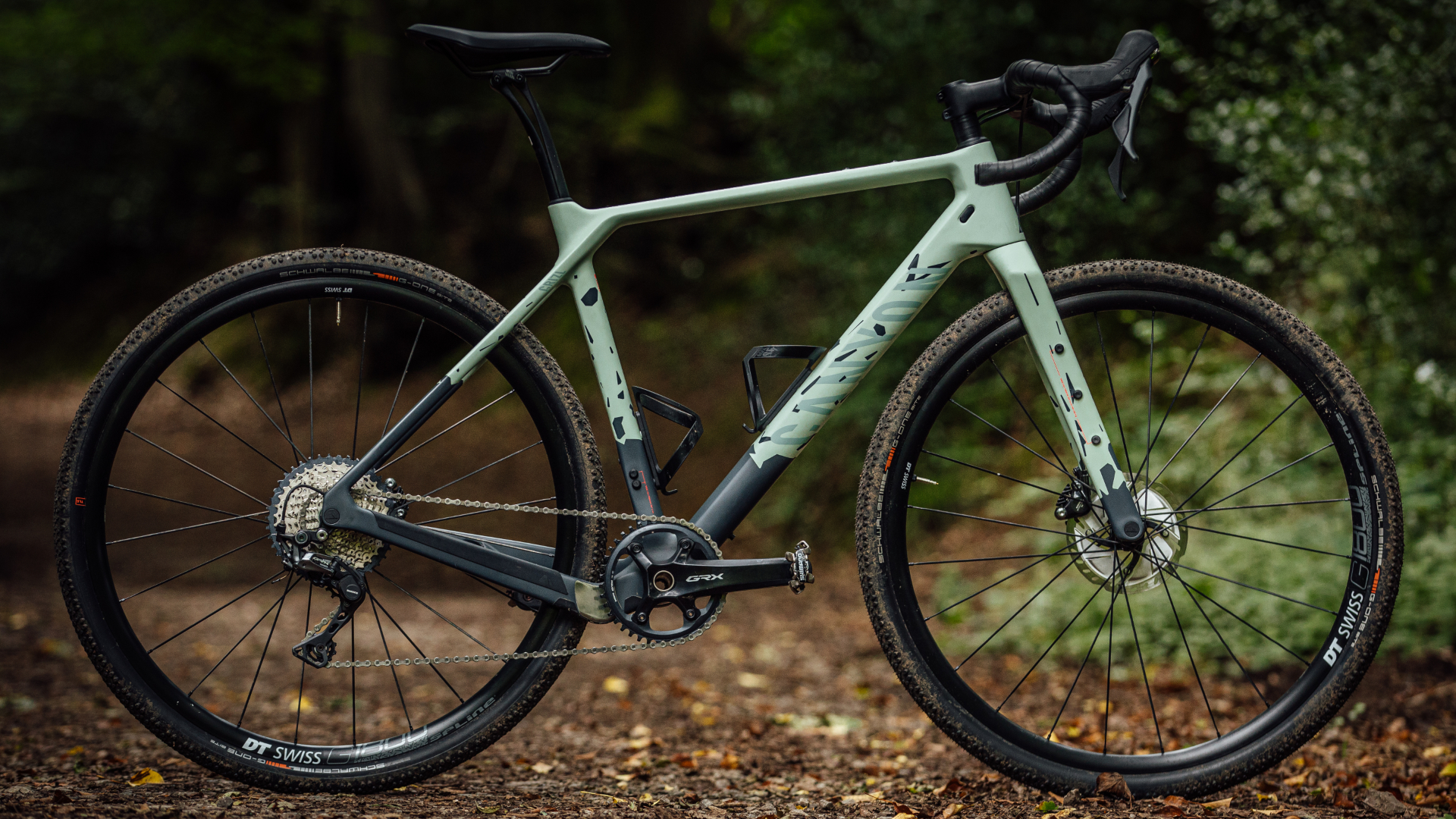
Although the Grizl might not completely cash the cheques of burliness and bikepacking that it has been writing, it was still a lot of fun to ride and can be taken down technical trails or loaded up for bikepacking. In this exact configuration, it’s not the absolutely perfect tool for either job, but it’s certainly not far off the mark and you do get a great spec of quality components to go with it.
-
+
Large tyre clearance
-
+
Good range of bikepacking mounts
-
+
Quality wheels and groupset
-
+
Front suspension ready
-
-
Gearing is a little steep for carrying loads
-
-
Long chainstays are at odds with its burly build
You can trust Cycling Weekly.

The Canyon Grizl was launched earlier this year to fill what Canyon saw as a gap in its gravel bike line up. The brand’s original gravel bike – the Grail – had notably narrow tyre clearances (maxing out at 42mm), which confined the bike to tamer terrain.
The German brand didn’t see this challenge so much as the Grail requiring an update, but rather a new bike needing to be introduced. Viewing gravel as a spectrum, Canyon felt that there was space for something a little more rugged than the existing Grail.
Frame
Perhaps the headline feature of the Grizl is that the tyre clearance has been upped to handle 50mm 700c tyres, greatly increasing its off-road capabilities. One point worth noting is that 700c x 50mm tyres are so large, Canyon doesn’t rate 650b wheels as interchangeable on the Grizl.
This is understandable, the standard widest 650b gravel option of 53mm (2.1”) is barely any larger than what the Grizl is designed for in 700c – and therefore the extra volume doesn’t make up for the smaller diameter of the wheel.
Further underlining the burliness, the fork is designed for 160/180mm rotors – rather than the 140/160mm you typically get on road bikes – while the headtube is designed to withstand the stresses of a suspension fork.
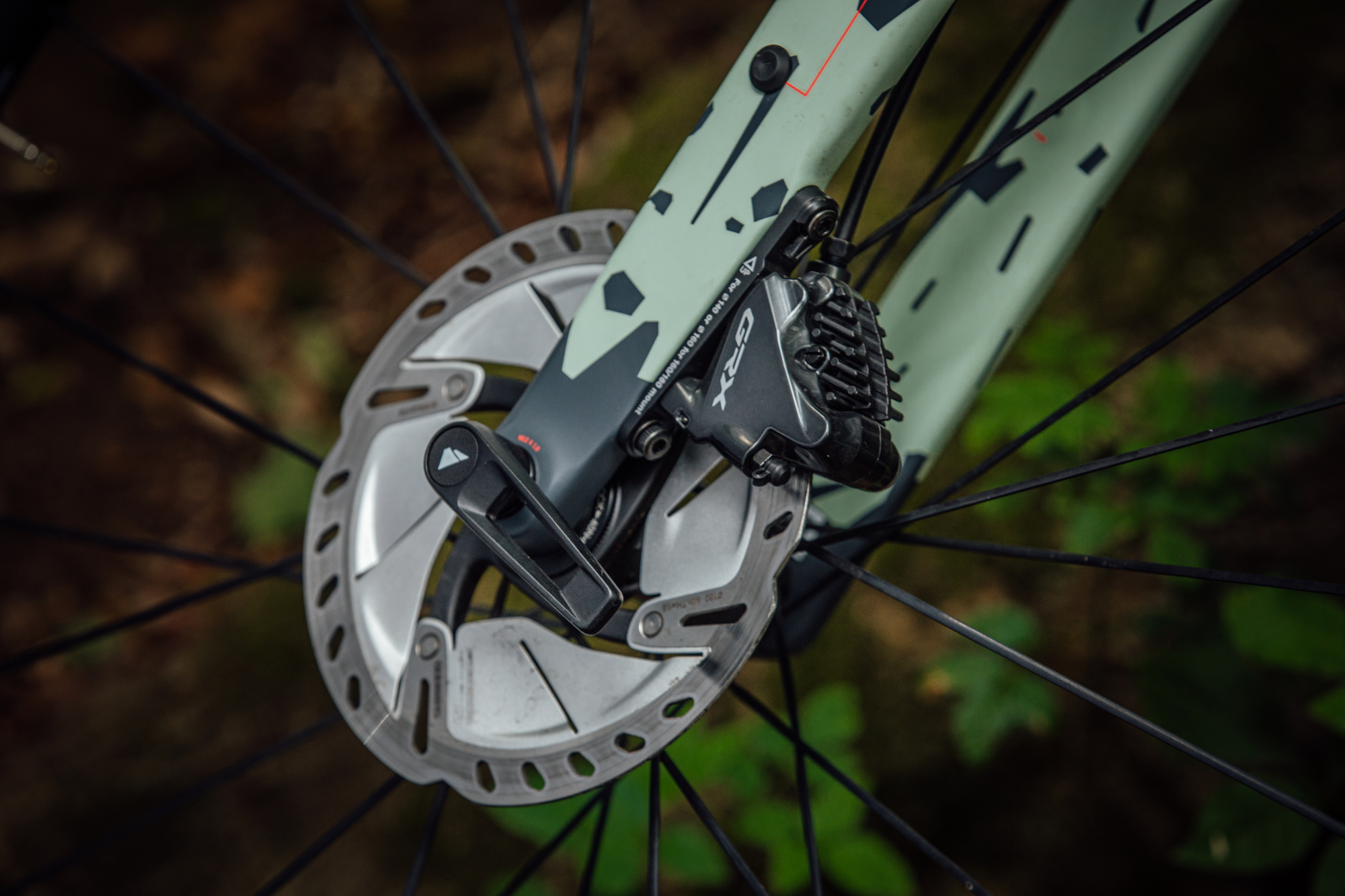
When it comes to bikepacking mounts, the Grizl has gone pretty much all in, with bosses on the underside of the downtube, top tube and triple mounts on each fork leg. Not provision for a rack and panniers, though, Canyon is evidently trying to make a clear distinction between bikepacking and touring. Although, that said, curiously there is still the option to run mudguards on the Grizl.
A low bottom bracket has the knock-on effect of lowering your centre of gravity, and tends to provide a more planted feeling through the corners – as if you’re “in” the bike rather than on it. While longer chainstays serve to lengthen the wheel base and help to increase the stability of a bike – although slowing down the handling a little.
In sizes small and upwards, the Grizl has a BB drop of 75mm – which is quite low for a gravel bike – while the chainstays come in at 435mm. That’s pretty typical for gravel bikes in general, but it’s still well over the threshold to notice the stability.
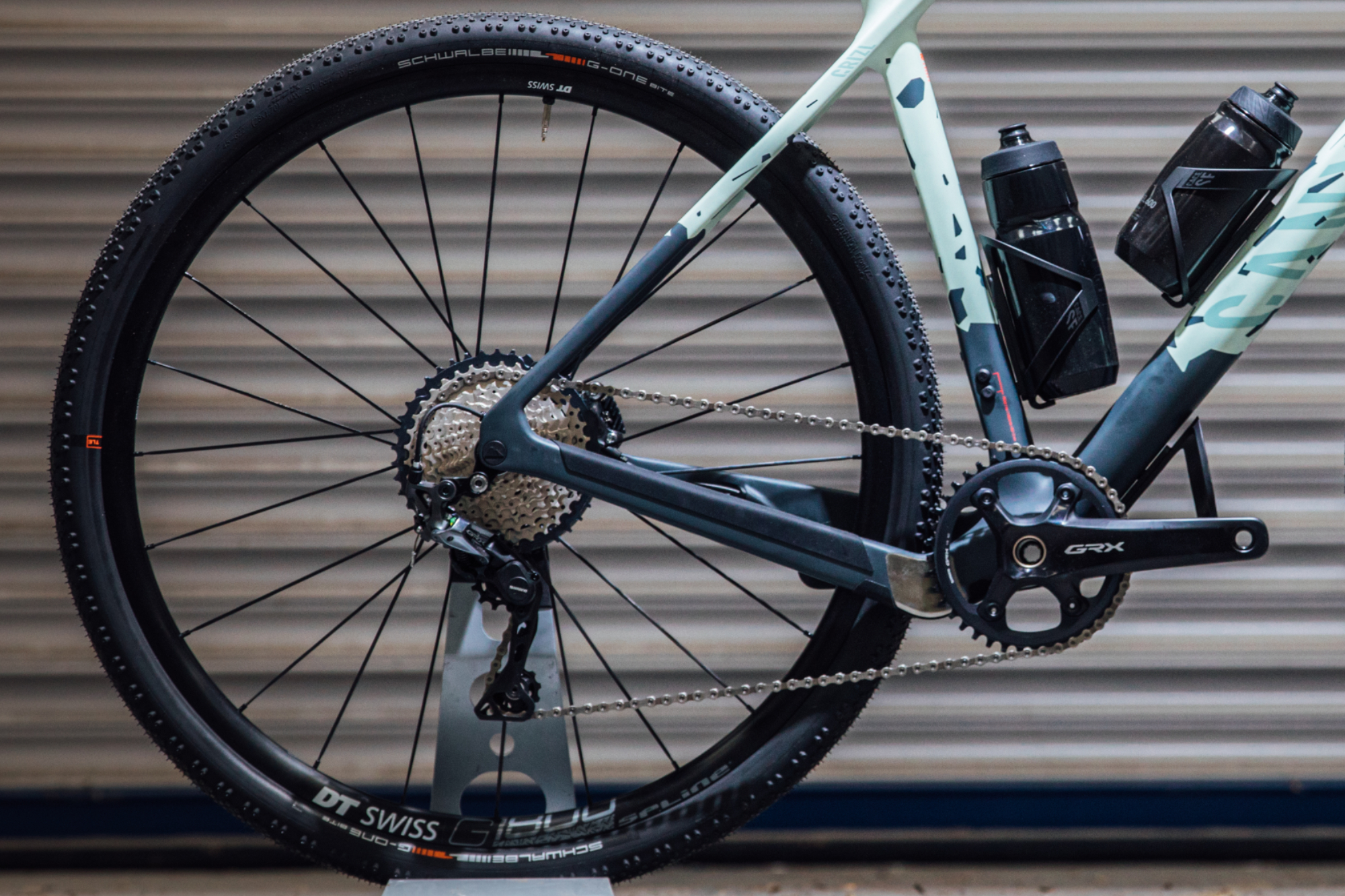
Although the head angle isn’t atypical for a gravel bike, being around 72 degrees, it is still on the steeper end of things and does seem a little at odds with other aspects of the geometry – slacker head angles tend to make the steering a little less twitchy and also increase stability.
Unlike some other brands, Canyon has revised the geometry for the smallest sizes to make for a better fit. XS and XXS are instead 650b specific, have chainstays of 420mm, a BB drop of 60mm and head angles of 71/70 degrees.
Components
Starting with the finishing kit, you’ll notice the absence of the unique “hover bar” design which was such a feature of the Grail. Using a standard two-piece set up with a round handlebar opens up the bike for use with aero extensions and makes it easier to swap in handlebars of your own choosing.
The bars the Grizl comes with are Canyon’s own, featuring an aluminium construction and are 44cm wide on the medium and large sizes. The seatpost, on the other hand, is Canyon's catchily named S15 VCLS 2.0 CF, which utilises a leaf-spring design to offer up to 20mm of travel.
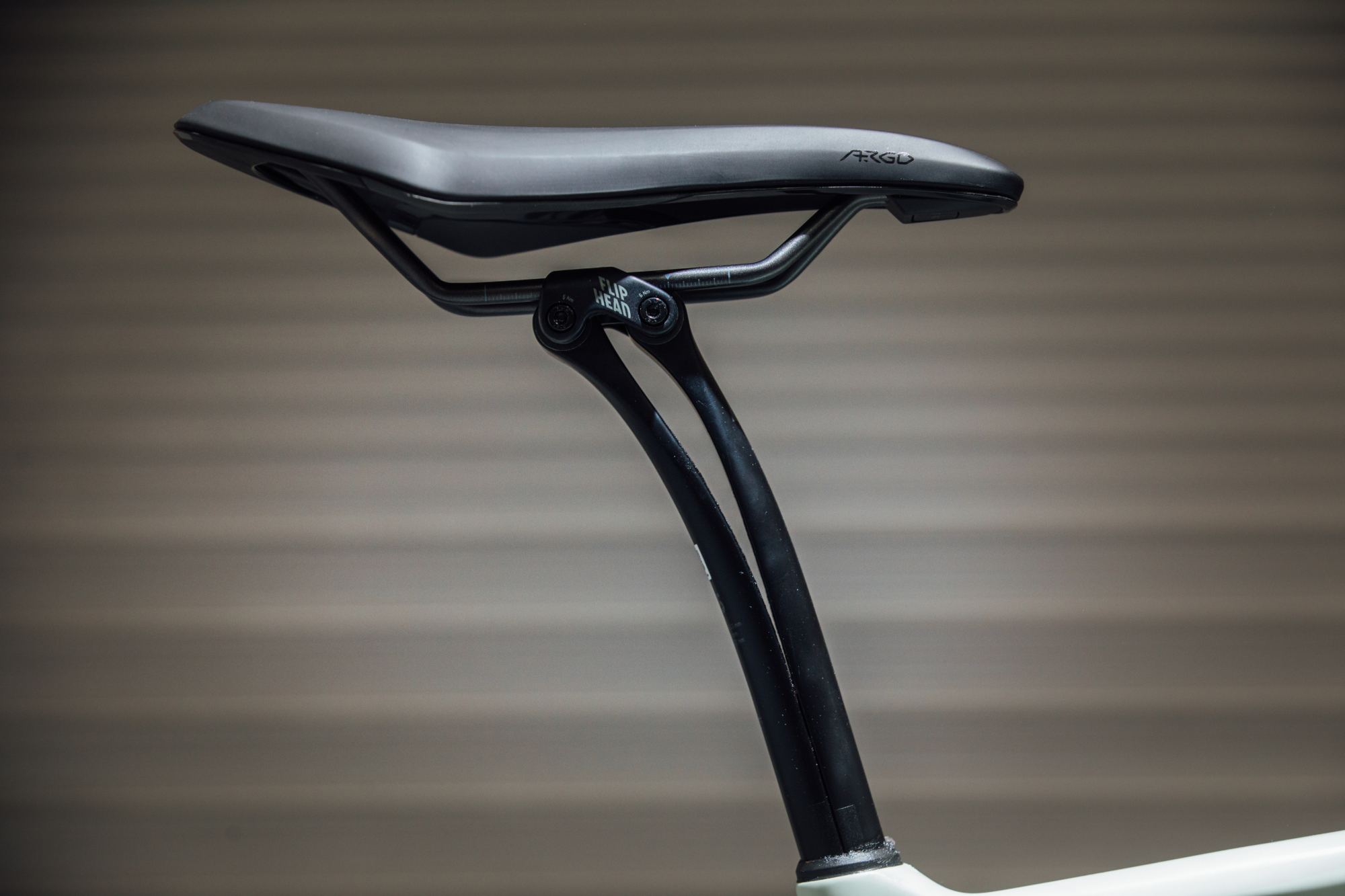
The wheels are DT Swiss’s G 1800 Spline, which feature a standard pawl system in the freehub, in contrast to the delightfully engineered ratchet system that the higher end hubs employ. But even so these wheels still have the robustness DT Swiss is known for and are reasonably lightweight with a wide 24mm internal rim width.
Wrapping these are a set of Schwalbe G-One Bite tyres in a 45mm width. With moderately sized knobs and that reasonably large volume, the G-One Bites make a pretty perfect match for my local riding in the lighter half of the year, with their blend of speed with grip and comfort. But, of course, tyre choice is very location and terrain specific – these may not suit your riding so well.
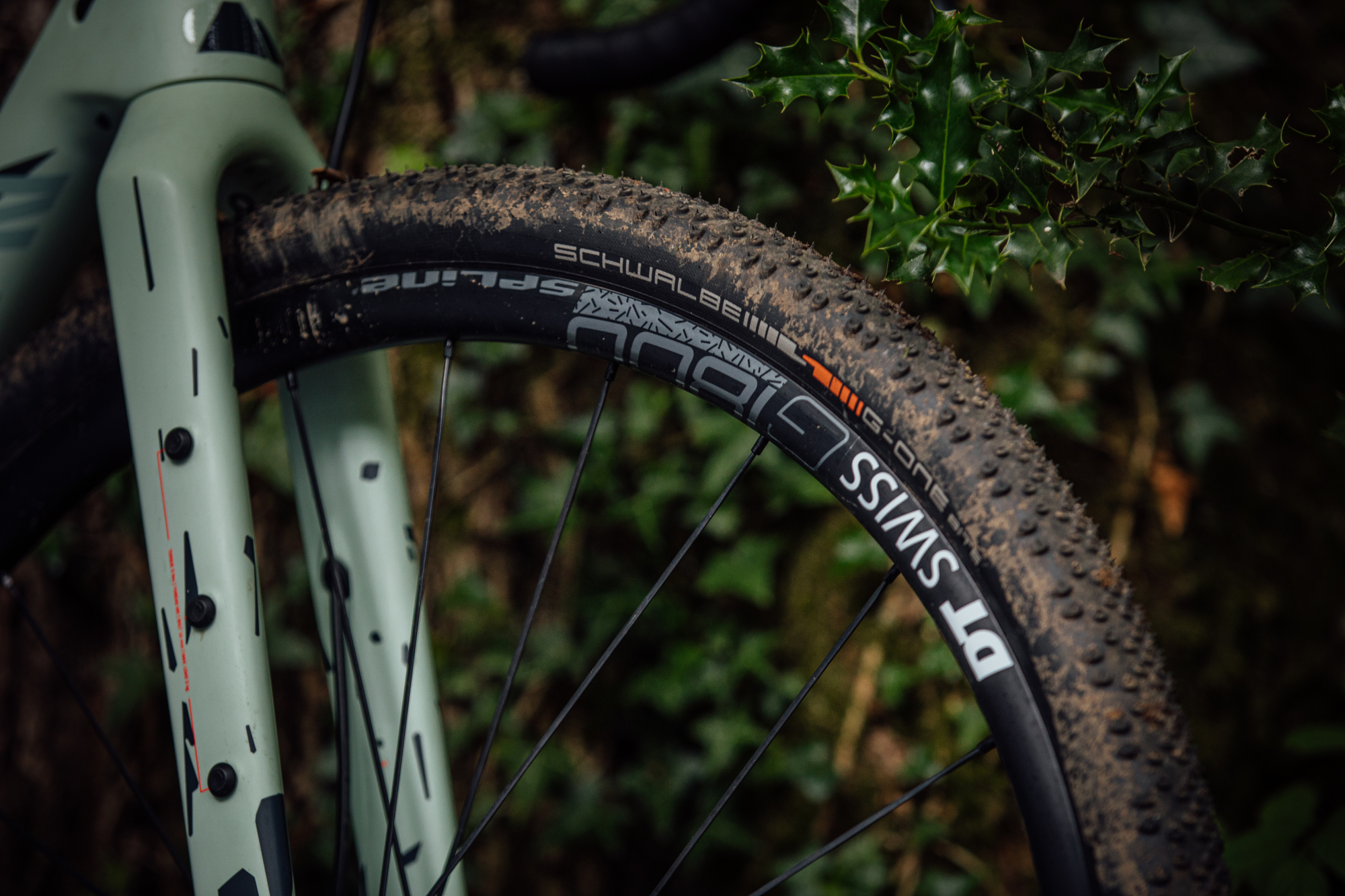
In terms of the groupset, the build is largely with Shimano’s GRX 800, which is effectively equivalent to Ultegra, Shimano’s the second-tier road offering. It’s not so often you see this groupset specced on bikes at this price point – particularly not with such quality wheels, tyres, and a suspension seatpost, so in terms of value it’s really quite good.
The hydraulicly actuated calipers are paired with 160mm rotors front and rear, but you can go up to 180mm at the front, should you wish for a bit more stopping power.
The gearing is the lowest Shimano offers in a 1x configuration, with a 40t chainring and an 11–42t cassette. This is fine for razzing about on a gravel blast, but for longer distance rides you would want a lower gear. There isn’t anything Shimano approved for this, but you could fit a Wolftooth 36t chainring or a Sunrace 11-46t cassette, although both these upgrades do have their drawbacks.
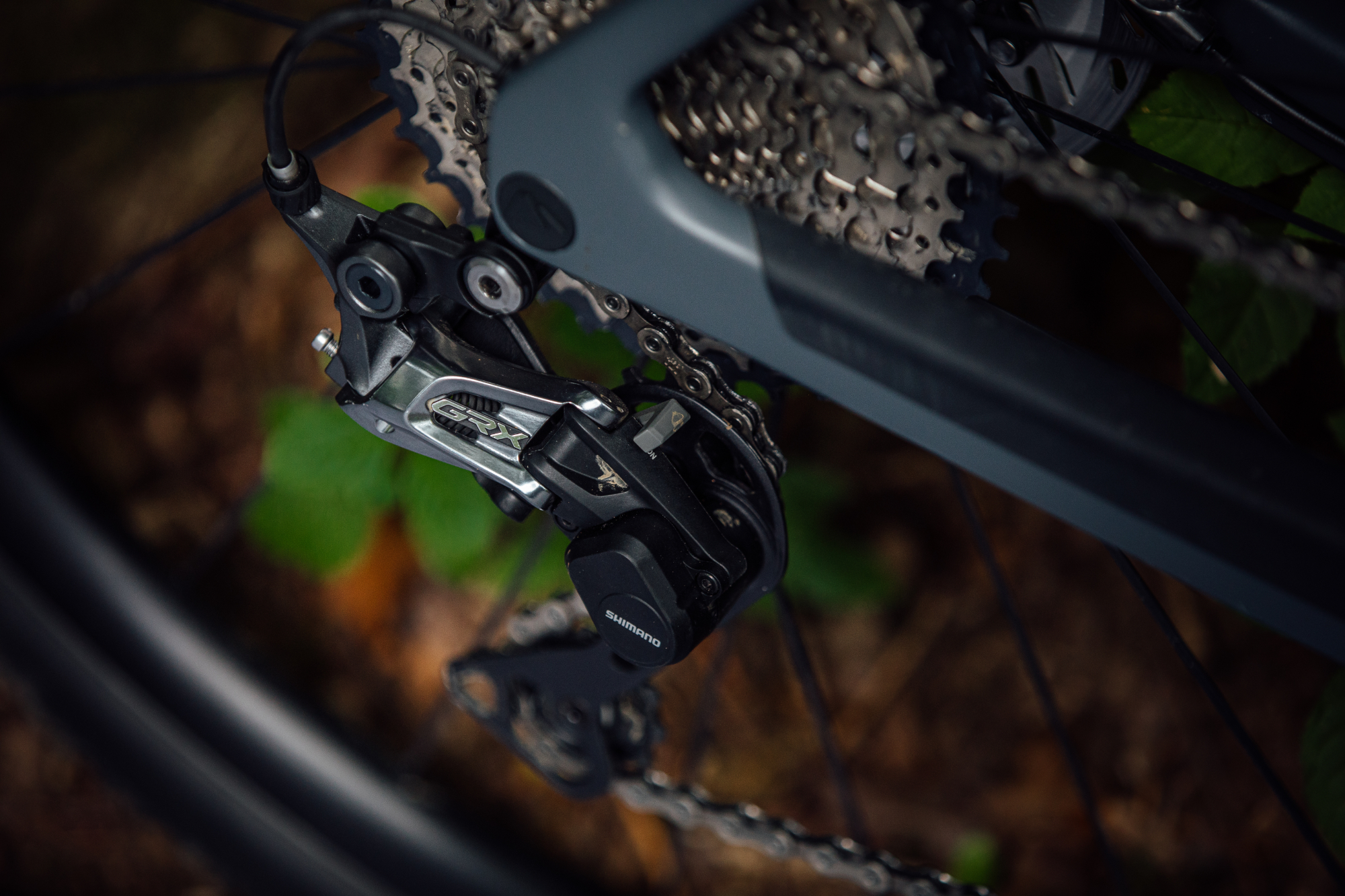
With a 36t chainring, you often spend more time hopping between the 13 and 11t sprockets than you’d wish and on an 11-46t cassette and you have a horrible three tooth jump between the 15 and 18t sprockets. For long distance ride and bikepacking trips, the 2x build for around the same price would be the better option.
The ride
Coming specced with the same Schwalbe G-One Bite tyres in 45mm as I’ve been using as my control tyre, the Grizl was pretty well suited to my local riding from the off. There was a good balance between being fast enough rolling on the road and tame trails, while still providing enough traction and cushion on more technical terrain.
Extra comfort was provided courtesy of Canyon’s catchily named S15 VCLS 2.0 CF suspension seatpost. The minimalist design doesn’t add much weight over a standard seatpost, but the 20mm of travel does serve to take the edge off some of the bumps.
However, for all its capability off-road, I did feel that there was a bit of a tension between certain elements of the design.
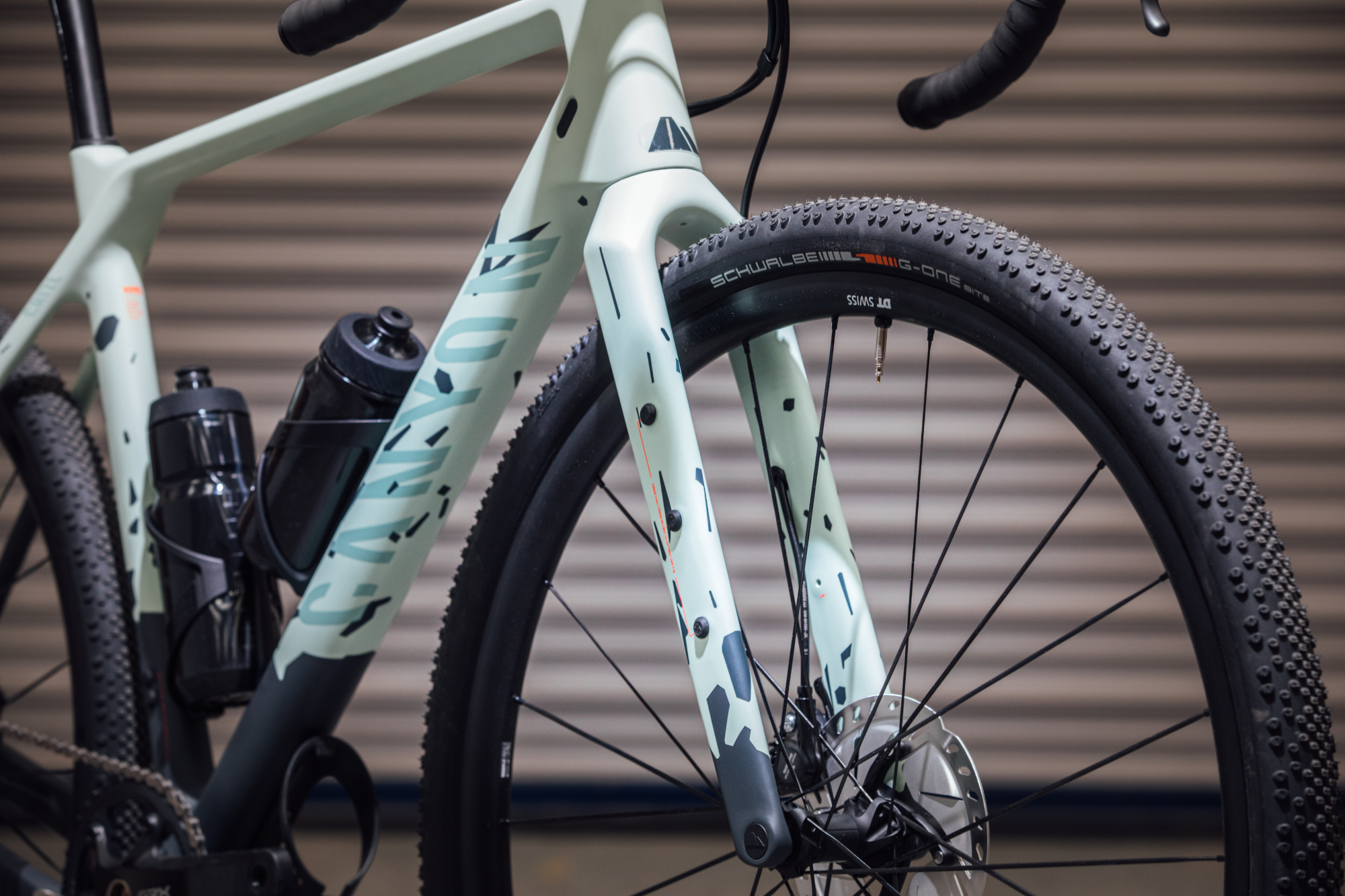
Yes, those burly tyres offer a lot of promise for hitting the trails hard, but the long chainstays at 435mm do hold it back a bit on tight and chattery singletrack. It’s not really an ideal pairing – if you’re primarily going to be razzing about the trails, you’d likely have a better time on a bike with chainstays around the 425mm mark, or even shorter.
On the other hand the range of mounts gives great potential for bikepacking adventures, but in this 1x configuration, there just isn’t the range you really need for carting luggage about off-road. You’d be much better off with the 2x versions for that – or going up a price bracket or two for the new build featuring SRAM’s XPLR 10-44t cassette paired with a 40t chainring.
But at least the gearing is something you can change – unlike the length of the chainstays. So that’s what I’d have to say this bike is really best suited for – off-road cycle touring and bumpy but wide trails.
Of course, you can take it down tight and twisty trails, I certainly did. It’s more that if that is the type of riding you’re planning on doing most of, then there are other bikes better suited.
Value
With its direct sales model, Canyon is known for being able to offer a good deal – and this is another such case. The Ultegra equivalent shifters, good DT Swiss wheels and a very nice seatpost, along with a high quality frame all make for an impressive package at £2,949.00.
The Rondo Ruut CF2 2x, in contrast, comes in at £2,799.00 but is specced with a 2x10 GRX drivetrain (which is equivalent to Shimano fourth tier road groupset, Tiagra) and Rondo’s own wheels – which is all much less flashy.
The Tifosi Cavazzo Ekar costs fractionally more at £2999.00, but comes with Campagnolo’s boundary pushing 1x13 groupset which solves many of the traditional drawbacks of a 1x drivetrain. The Cavazzo does economise in other areas though, with the Miche wheels being a step down from the Grizl’s DT Swiss hoops and the frame being an open mould.
Verdict
If riding twisty forest trails is your main intention, then you’d likely be better off on a bike with some short chainstays and a slacker head angle. Or, if your focus is centred around big rides and long trips, you would probably benefit from a build which offers a lower gearing range.
But although the Grizl might not be dead-on perfect for technical trail riding or bikepacking in this configuration, it is still a capable bike which proved fun to ride and had good provision for the attachment of bikepacking bags.
Specs
- Frame: Canyon Grizl CF SL
- Fork: Canyon FK0087 CF Disc
- Shifters: Shimano GRX RX810, 11-speed
- Crankset: Shimano RX810 40t
- Derailleur: Shimano GRX RX812 GS
- Cassette: Shimano SLX M7000 11-42t
- Brakeset: Shimano GRX BR-RX810
- Wheels: DT Swiss G1800 Spline db
- Tyres and clearance: Schwalbe G-One Bite 700x45c (Max: 700x50c)
- Head angle: 72.25 degrees
- Chainstay length: 435mm
- BB drop: 75mm
- BB: Token Ninja Lite BB4124 PF86.5
- Weight: 9.77kg

Thank you for reading 20 articles this month* Join now for unlimited access
Enjoy your first month for just £1 / $1 / €1
*Read 5 free articles per month without a subscription

Join now for unlimited access
Try first month for just £1 / $1 / €1
Get The Leadout Newsletter
The latest race content, interviews, features, reviews and expert buying guides, direct to your inbox!

After winning the 2019 National Single-Speed Cross-Country Mountain Biking Championships and claiming the plushie unicorn (true story), Stefan swapped the flat-bars for drop-bars and has never looked back.
Since then, he’s earnt his 2ⁿᵈ cat racing licence in his first season racing as a third, completed the South Downs Double in under 20 hours and Everested in under 12.
But his favourite rides are multiday bikepacking trips, with all the huge amount of cycling tech and long days spent exploring new roads and trails - as well as histories and cultures. Most recently, he’s spent two weeks riding from Budapest into the mountains of Slovakia.
Height: 177cm
Weight: 67–69kg
-
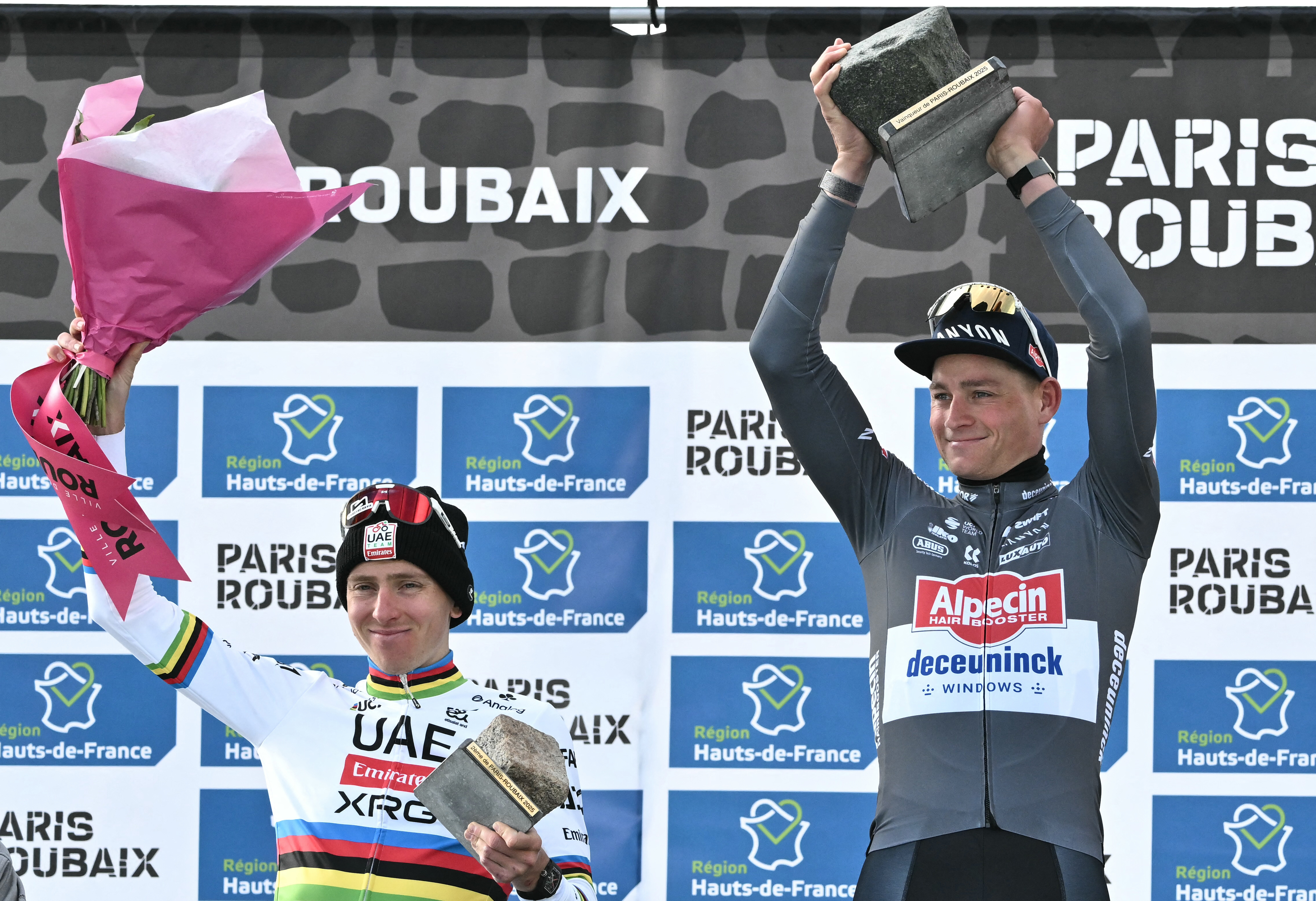 The stats behind Mathieu van der Poel’s record-breaking Roubaix success
The stats behind Mathieu van der Poel’s record-breaking Roubaix successThe Dutchman's eighth success in a Monument underlined his standing among the Classics greats
By Peter Cossins Published
-
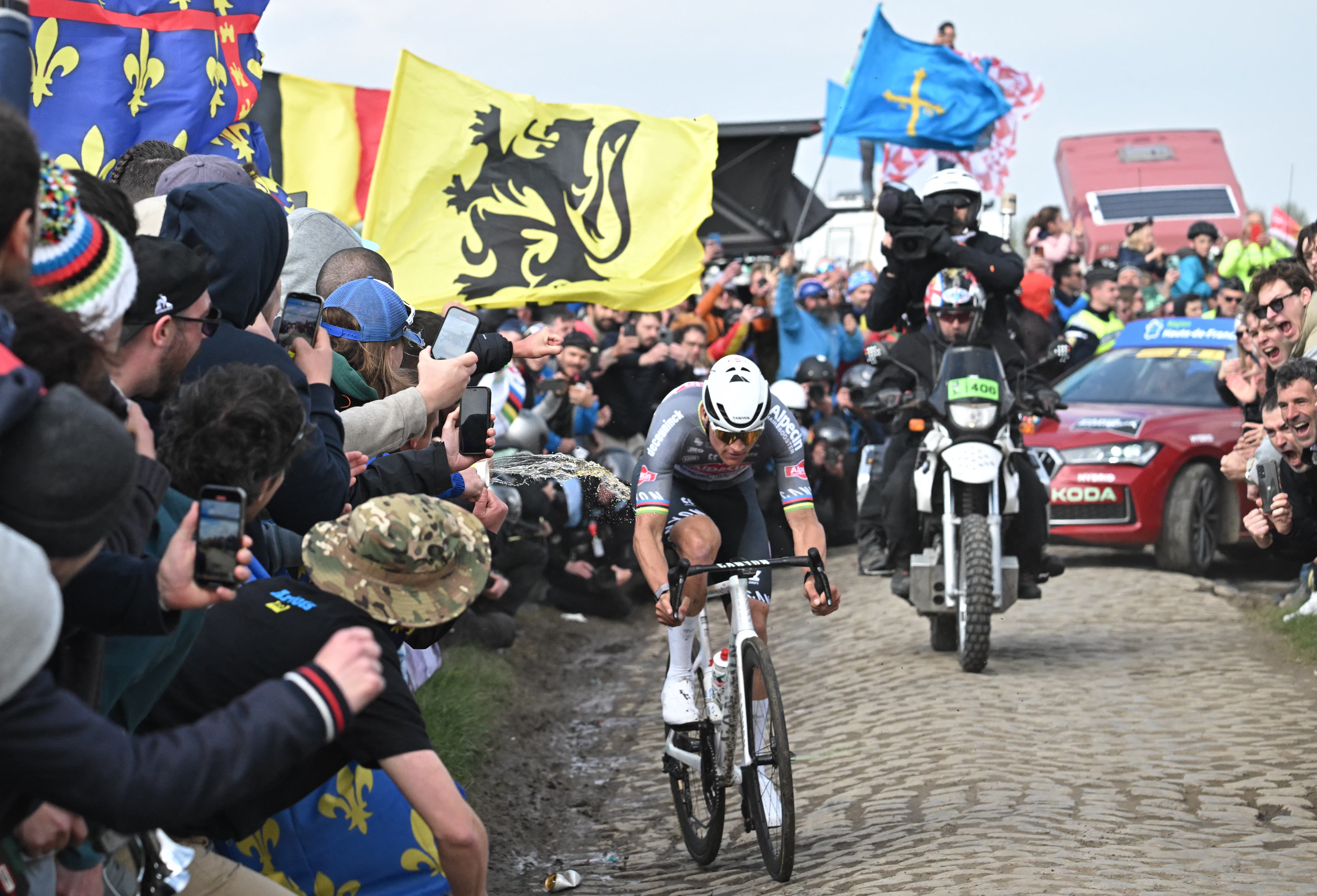 'It was like a stone hitting my face' - Mathieu van der Poel calls for 'legal action' after bottle incident at Paris-Roubaix
'It was like a stone hitting my face' - Mathieu van der Poel calls for 'legal action' after bottle incident at Paris-RoubaixThe winner was hit by a bottle in the face on Templeuve, sector 8b
By Adam Becket Published
-
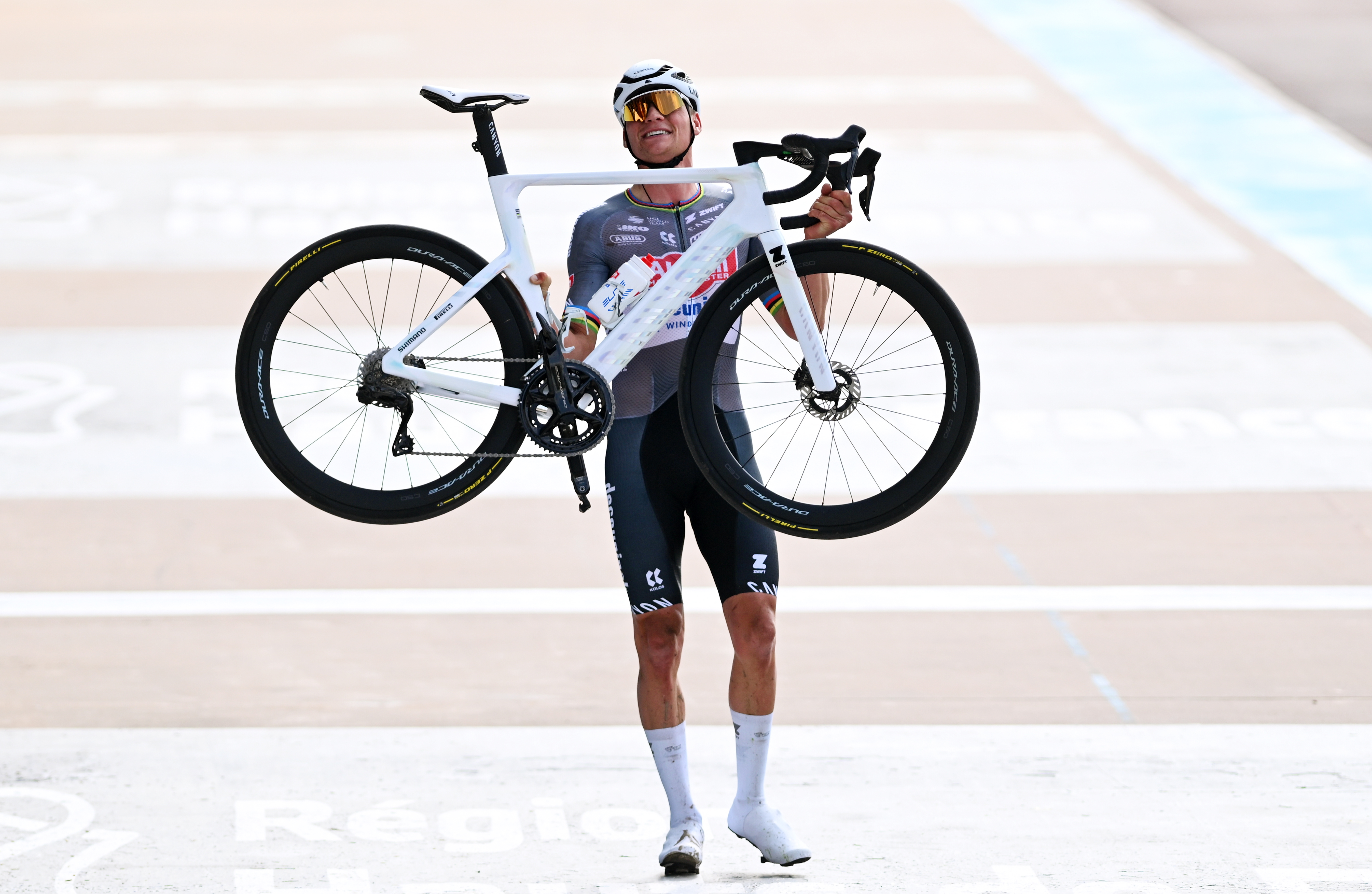 Mathieu van der Poel secures Paris-Roubaix hat-trick after epic duel with Tadej Pogačar
Mathieu van der Poel secures Paris-Roubaix hat-trick after epic duel with Tadej PogačarDutchman takes his third win in a row after Pogačar crashes on the cobbles, while Mads Pedersen finishes third
By Peter Cossins Published